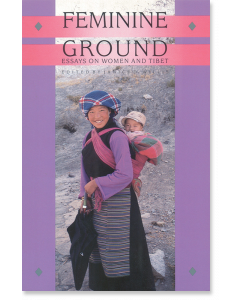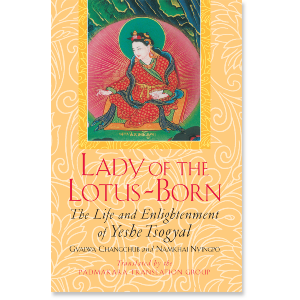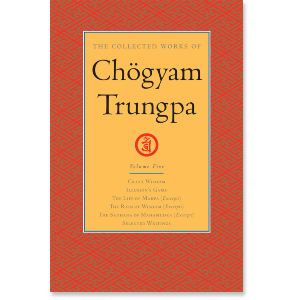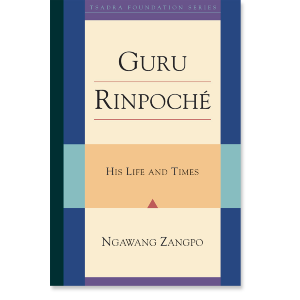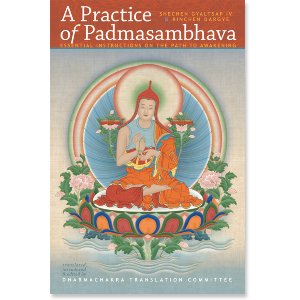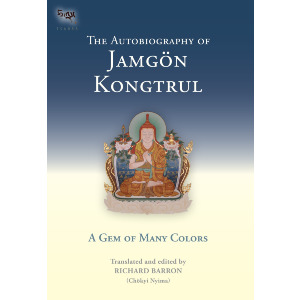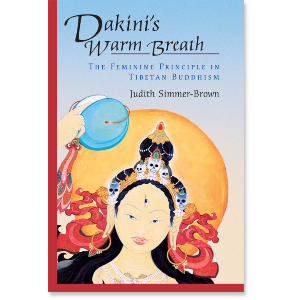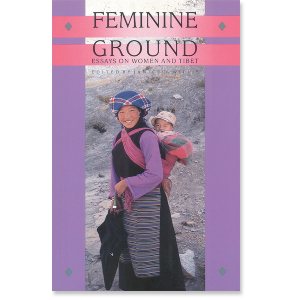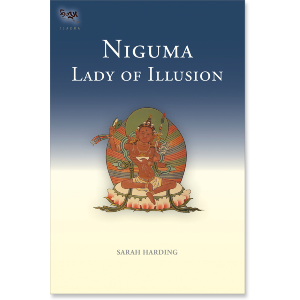Janice D. Willis
Janice D. Willis
GUIDES

This series of blog posts are meant to be resources guides to complement the biographies of the great masters and scholars on the Treasury of Lives site.
Mandarava
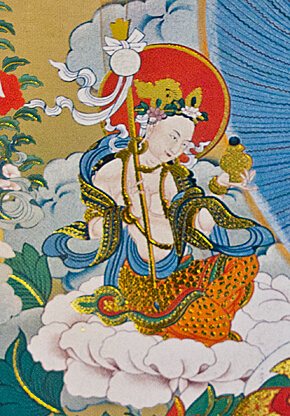
Mandarava
Mandarava was one of the great 8th century adepts and was one of the main consorts of Guru Rinpoche. As such a central figure at the time of Guru Rinpoche, she is a focus of many works.
A wonderful complete biography was published by our friends at Wisdom Publications as The Lives and Liberation of Princess Mandarava.
A short account of her life by Sarah Jacoby is on the Treasury of Lives site.
In Crazy Wisdom which is included in The Collected Works of Chögyam Trungpa, Volume 5, Trungpa Rinpoche describes the scene when Mandarava met Guru Rinpoche:
"One day he visited a nunnery. At this particular nunnery lived a princess called Mandarava, who had just recently become a nun and had completely turned away from worldly pleasure. She lived in seclusion, guarded by five hundred women, whose task was to make sure that she maintained her monastic discipline. When Padmasambhava arrived at the monastery, everyone was quite impressed with him-naturally. He had the innocence of one born from a lotus and a pure and ideal physique. He was very beautiful. He converted all the women in the nunnery: they all became his students. "
In Lady of the Lotus-Born, there is a wonderful scene where Mandarava and Yeshe Tsogyal, Guru Rinpoche's most well-known consorts, bestow teachings on each other:
"Mandarava requested the twenty-seven pith instructions, a special teaching of the Guru, unknown in India. And Tsogyal offered them to her. Now Mandarava was a dakini of longevity, a Lady of Immortal Life, and so Tsogyal asked her for the seven pith instructions of long life, as well as the thirteen pith instructions on Hayagriva and other deities, all of which teachings she concealed as Treasures. "
There follows an exchange of offering verses between the two of them. First, from Yeshe Tsogyal:
Om Ah Hung!
Dakini who won the diamond state of deathlessness,
Whose body, like a rainbow, rides upon the sky,
You pass with mastery through things unhindered,
And crush the Demon Lord of Death,
And overthrow the Demon of the Aggregates.
Freed from shackles of the Demon of Defiled Emotion,
You humbled and brought low the Demon Son of Gods:
Dakini and mistress of longevity,
Is this not yourself?
From highest Akanishta down,
Throughout the three dimensions of existence,
Of every high and noble one you are the mistress.
The body of Great Bliss is yours,
Mandarava, sublime patterning of voidness,
Mother of wanderers, to you I bow!
For beings in the endless karmic stream of birth and death,
Caught on the mill-wheel driven
By the torrent of impure delusion,
You close the door to their descent and fall.
May my prayer to be as you are be fulfilled.
When karma is exhausted and the thought of pleasure vanished,
When the mire of delusion has dried up,
When the three worlds, all samsara, are exhausted
And every thought extinguished-
In the sphere of Great Bliss blissfully enclosed,
May I be never separate from Samantabhadri of Great Bliss.
Thus she prayed and requested many pith instructions that had never been heard of in Tibet. Then the queen of siddhas, Princess Mandarava, answered:
Kyeho!
Accomplished in the Secret Mantra,
Dancer in the sky,
Wonder-worker who dissolved her impure form
Into the sphere of purity,
You drank the nectar of the teachings
Of the Lotus-Born
And gathered all their essence-
Great Mother, Wisdom that has gone beyond,
Is this not yourself?
Entering the path wherein the truth
Of all phenomena is seen,
You utterly forsook the eight preoccupations of this life
And, practicing austerities, lived upon essential substance,
Overcoming all phenomenal existence.
Tsogyal, ever-young, immaculate, to you I bow!
Sinful beings in the endless cycle of samsara,
Blown by the hurricane of karma-
These you tame and guide most skillfully.
Establishing the Dharma, you undid
The devilish perversity of Bon.
Mistress, sovereign strength, may I be one with you!
Hereafter in the purity of infinite pure space,
Which is the pure expanse of Lotus Light,
Bathed in the beams of Pema Tho ¨dreng's love,
May you and I together send out emanated forms
To work enlightened actions,
Churning thus the three worlds of samsara!
And with this prayer, she disappeared into space. "
Mandarava is featured throughout Guru Rinpoche: His Life and Times where Lama Ngawang Zangpo points out it was not her status as consort that mattered but rather that she and Yeshe Tsogyal "were the best among Guru Rinpoche's disciples, men or women; their inclusion in countless paintings and sculptures of the master is a tribute to their personal enlightenment during an era of social enlightenment. "
Included in Guru Rinpoche are several short biographies of his life. In Jamgon Kongtrul's account, he introduces Mandarava thusly:
"Mandarava, daughter of Arsadhara, king of Zahor, was a woman who showed all the signs of being a dakini. The Master seduced her and accepted her as his consort and companion in spiritual practice. After three months of longevity meditation in Maratika Cave, the lord protector Buddha Infinite Life [Amitayus] appeared in person, bestowed empowerment, and blessed them as inseparable from him. When the Buddha imparted a billion tantras of longevity, they attained accomplishment of the state of an awareness holder who controls longevity. Their bodies became adamantine, beyond birth and death. "
Mandarava is an important part of many practices, whether explicitly as Guru Rinpoche's consort, or symbolically as Guru Rinpoche's khatvanga as described in Shechen Gyaltsap's A Practice of Padmasambhava [link and image] or Thinley Norbu Rinpoche's Cascading Waterfall of Nectar.
Mandarava is also a close link in the treasure tradition.
In the Autobiography of Jamgon Kongtrul, the author relates how he discovered as a terma a piece of Madarava's clothing along with some other precious objects.
Mandarava is very strongly associated with the Maratika cave and longevity. This can be seen in Chogyal Namkhai Norbu's account of his experiences at Maratika in Dream Yoga and the Practice of Natural Light where he relates his dreams of Mandarava before discovering a gongter, or earth treasure, there.
Mandarava also features in several modern scholarly books as a model of the feminine principle.
In Dakini's Warm Breath: The Feminine Principle in Tibetan Buddhism, Naropa professor Judith Simmer-Brown explores the importance and role of Mandarava.
In Feminine Ground, Jan Willis also explores Mandarva and what she represents, through a contemporary lens.
The dakini Niguma, the founder of the Shangpa Kagyu lineage and the sister of Naropa, is considered a reincarnation of Mandarava.
Further Resources:
TBRC Reference: http://tbrc.org/#!rid=P00AG0428
Treasury of Lives Site: http://treasuryoflives.org/biographies/view/Mandarava/9
Related Books
$34.95 - Paperback
By: Gyalwa Changchub & Namkhai Nyingpo & Padmakara Translation Group
The Collected Works of Chogyam Trungpa: Volume Five
$49.95 - Hardcover

